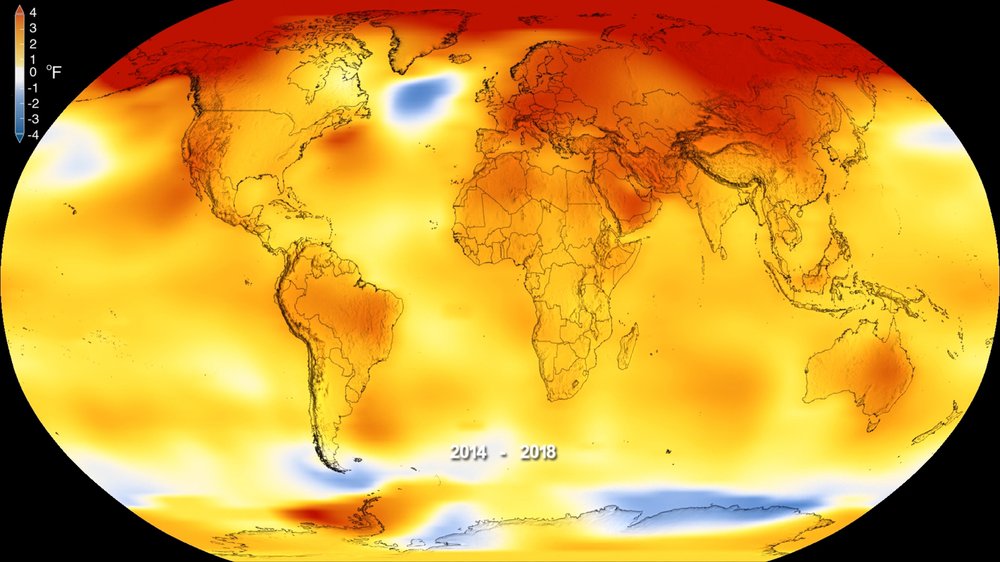While 2018 was the fourth-warmest year on record, British meteorologists are predicting the next five years will be much hotter, maybe even record-breaking.
Two U.S. agencies, the United Kingdom Met Office and the World Meteorological Organization analyzed global temperatures in slightly different ways, but each came to the same conclusion Wednesday: 2018 was the fourth-warmest year on record behind 2016, 2015 and 2017.
The U.S. government’s National Oceanic and Atmospheric Administration said 2018′s average temperature was 58.42 degrees (14.69 Celsius), which is 1.42 degrees (0.79 Celsius) warmer than the 20th century average. Much of Europe had its warmest years on record. Records go back to 1880.
NASA and NOAA climate scientists said even though 2018 was a tad cooler than the three previous years that’s mostly due to random weather variations.
“Never mind the little wiggles from year to year. The trend is going relentlessly up, and it will continue to do so,” Potsdam Institute climate scientist Stefan Rahmstorf said in an email. “Those who live in denial of this fact are in denial of physics.”
Using computer simulations, the British weather office forecast s that the next five years will average somewhere between 58.51 and 59.49 degrees (14.73 to 15.27 Celsius). That would be warmer than the last four years.
Outside scientists, such as Natalie Mahowald of Cornell University, said the forecast is consistent with what researchers know about warming and natural variability.
The obvious long-term trend of steady warming makes it easier to more accurately predict near future warming, said NASA chief climate scientist Gavin Schmidt.
The U.S. temperature in 2018 was the 14th warmest on average, said NOAA climate monitoring chief Deke Arndt.
Last year was also the third wettest on record in the U.S. Nine eastern states had their wettest years on record, “an exclamation point on a trend of big rain” in the age of climate change, Arndt said.
There were 14 weather and climate disasters that cost more than $1 billion, for a total of $91 billion, Arndt said. At least 247 people died in those disasters. That’s the fourth-highest number of billion-dollar disasters and the fourth-highest dollar amount, taking inflation into account. The damage included Hurricane Michael’s $25 billion tally and $24 billion each from Hurricane Florence and the western wildfires.
(AP)












2 Responses
Glad to be a denier of physics!!!
Even though the people in this story don’t want you to know, so many meteorologists claim that this is a bunch of garbage.
There records only go back a century or two at most. If you reconstruct past weather based on records of when rivers turned to ice, or which crops grew where, the result is one sees that the alarmists are mistaking normal variation for “change”, and by choosing the coldest period in recorded history (16th to early 18th centuries) as a starting point at imagining radical warming. It was apparently warmer during the time of the Bayis Sheini and colder during the “Dark ages” (when freezing rivers allow “barbarians” at attack Rome), and was warmer during the period of the Rishonim. Plus, it seems that in the past, warm periods were more prosperous, so we should be happy it is getting warmer (longer growing seasons mean cheaper food, less problems with cold weather).